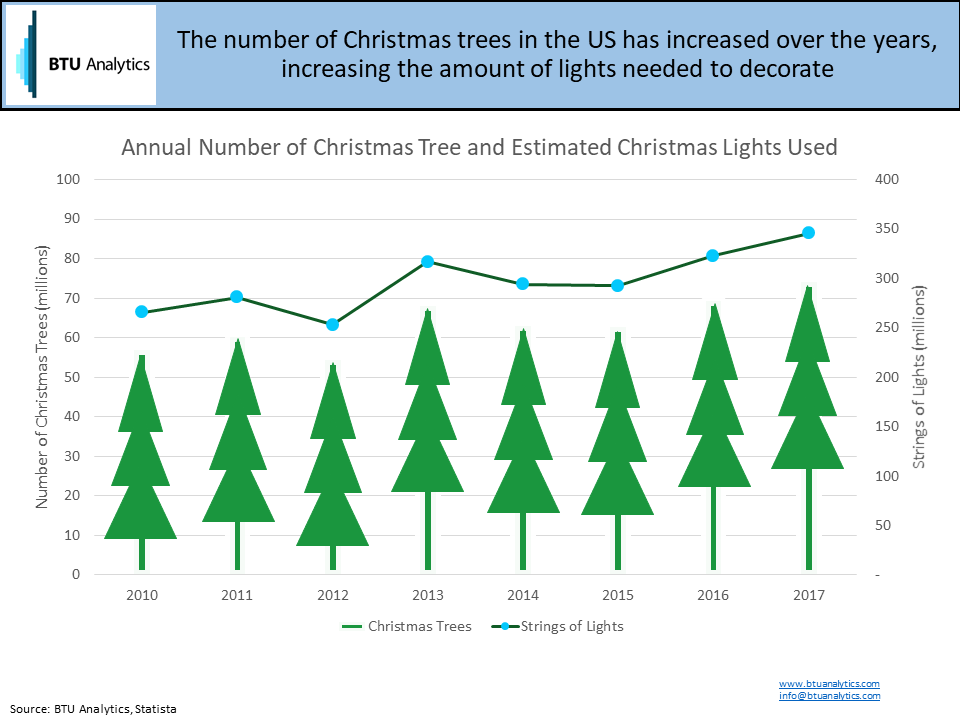Over the years, BTU Analytics has taken the opportunity to analyze the “relationship” between Thanksgiving and oil and gas markets around the end of November in our energy market commentary. Previous topics include “great turkey highways” in Appalachia, the relationship between well size and turkey size, the relationship between natural gas production and turkey population, and Thanksgiving demand boosts. Inspired by that analysis, this week’s energy market commentary will take a look at relationships between holiday lights and energy demand in the US each holiday season. Like our “great turkey highway” analysis, this commentary is for entertainment purposes only. However, if you are interested in BTU Analytics’ real views on natural gas demand and production, request a sample of our Henry Hub Outlook.
One of the most popular holiday decorations across homes and businesses throughout the US is the Christmas tree. Each tree is typically decorated with hundreds of holiday lights, and each little light consumes electricity. Using yearly real and artificial tree sales and making some assumptions about artificial tree reuse, the graph below shows an estimate of the number of trees decorated in the US. Also on the graph is an approximate number of strings of holiday lights assuming an average tree height of 7 feet and a recommendation of 100 lights for every foot and a half of tree height (per a quick Google search). This leads to an estimate of close to 350 million strings of 100 lights on Christmas trees across the US. Assuming an even split of incandescent and LED lights and 5 hours of use each day for the month of December, these lights used around 1.25 TWh of electricity in 2017.

However, Christmas trees are just the tip of the iceberg when it comes to holiday decorations and lights. Homes, businesses, and public spaces put up billions of holiday lights across the US each year. A Department of Energy report found that annual electricity consumption from decorative holiday lights was 6.63 TWh in 2007. From the analysis above, estimated 2007 electricity demand from Christmas tree lights was 1.15 TWh or 17% of total holiday decorative lighting demand. Assuming that percentage is constant each year and that holiday lights were powered solely by natural gas fired generation, the graph below shows the amount of natural gas that would be needed to meet holiday decorative light electricity demand each year along with US dry gas production.

There appears to be a strong relationship between holiday light electricity demand and US natural gas production. However, based on all of the assumptions of this analysis, holiday decorations would end up accounting for less than 2 Bcf/d of potential natural gas demand across the country during the holiday season. To put that in perspective, estimated electricity demand from holiday lights for the 2017 holiday season was about 6.5% of December 2017 US power burn demand and about 2% of 2017 total US dry gas production. While there are billions of holiday lights hung up across the US and they consume a lot of energy throughout the holiday season, their impact on natural gas demand is small. So, enjoy your Christmas trees and your holiday lights!
Happy holidays and happy new year from BTU Analytics!









